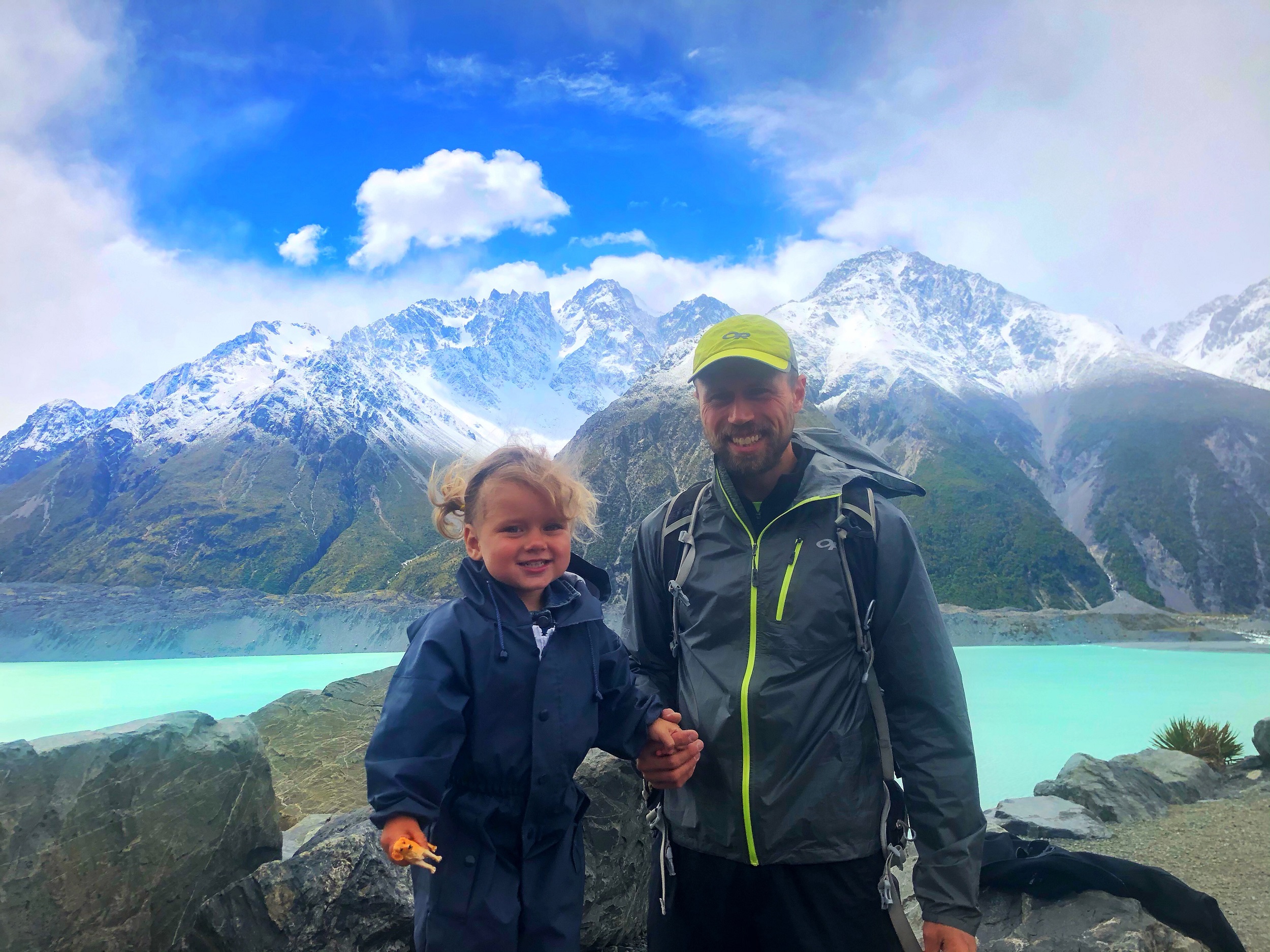Hiking with toddlers is definitely achievable. And it can definitely be fun! But you DO need to be prepared. For just about anything! And there will be a bit of a learning curve as you figure out your toddler’s “hiking style”.
A quick first tip? Don’t try to change your toddler’s hiking style. Learn to go with it and enjoy their take on hiking and nature.
Did you expect them to walk and burn off energy, but all they want is to be picked up? Go with it.
Did you expect their little legs to tire out, but they insist on walking the whole way themselves? Go with it.
Learn to plan around it, and everyone will have more fun!
Okay, here are my top tips for successfully hiking with toddlers:
- How to Carry a Toddler While Hiking
- How Far Can a Toddler Walk?
- Plan Around Nap Times
- Don't Be Afraid of Difficult Hikes With Toddlers
- Plan to Get Dirty
- What to Bring When Hiking With Toddlers
- What to Do When Toddlers Get Bored On a Hike
1. How to Carry a Toddler While Hiking
You’re going to want a way to carry your toddler when they just don’t feel like walking anymore.
If you’re hiking with a partner, a simple carrier will do. One person can carry all the gear in a backpack, and you can carry your toddler when their little legs just need a rest.
By this age, I found it way easier to have my toddler on my back instead of in the front. You need to see where your feet are going to avoid all the roots and rocks you’ll encounter!

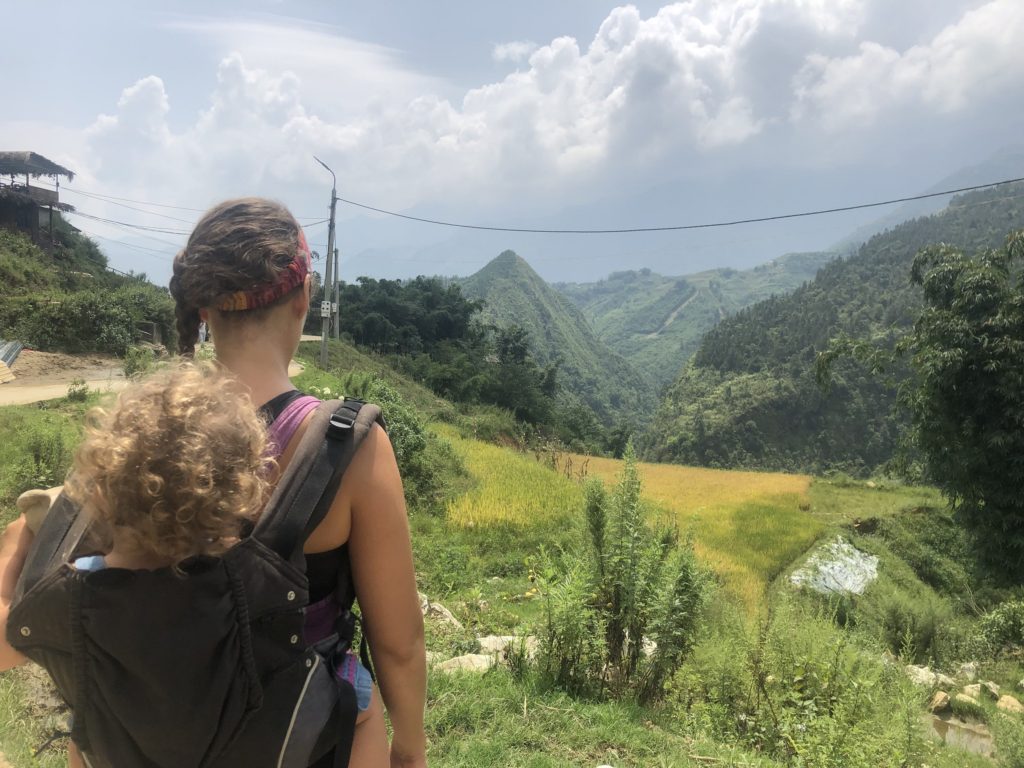
If you’re hiking by yourself, you may want to consider investing in a hiking backpack. A hiking backpack allows you to carry both your toddler and some supplies like snacks and diapers.
Backpacks also allow your child to snack on the go and have a little toy to play with if needed. Plus, they tend to allow easier viewing of their surroundings. In a carrier, their little face can be smashed up against your back at times.
Most hiking backpacks also come with a sun shield and rain cover. Pretty luxury travel, don't you think?
After a lot of research, we decided on this Osprey one, and have absolutely no complaints about it! We also liked the Deuter one, but when it came down to the fit for my body, I preferred the Osprey.
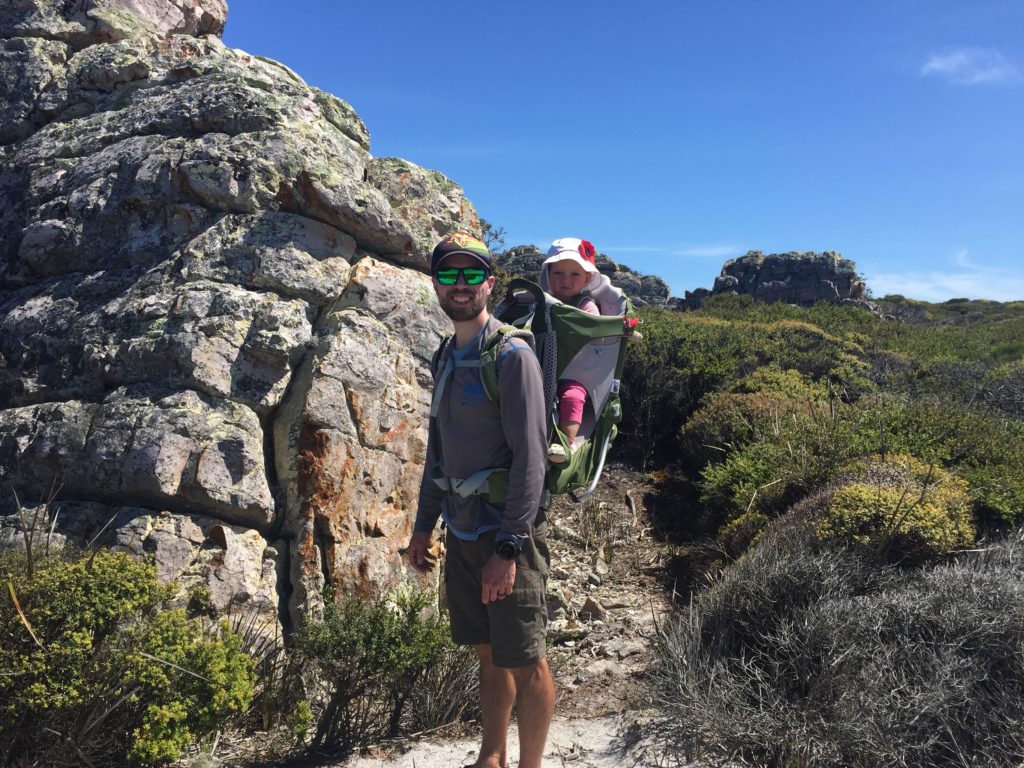

No matter what carrying method you prefer, I highly suggest having a 5-minute rule. If your toddler is anything like mine, the grass is always greener on the other side. What do I mean by that? I mean when they’re walking, they want to be in the carrier. When they’re in the carrier, they want to be walking.
The constant in-out, up-down can get time consuming and downright annoying. We started implementing a 5-minute rule. Once your toddler makes the choice to be down, they have to be down for at least five minutes before getting back in the carrier.
Once they’re in the carrier, they have to stay up there for at least five minutes before seeing that next shiny object on the trail that has them requesting to get down. I set a timer on my phone, so we both know whether five minutes has passed or not. Plus, you’d be surprised with how much ground you can cover in five minutes without little legs doing the walking.
2. How Far Can a Toddler Walk?
When hiking with toddlers, I usually like to think in units of time rather than distance. So the better question should be… How much time do you have? For us, between toddler walking time and toddler carrier time, we can usually count on about 1 mile per hour.
If we’re going on a 5k (3 mile) hike, we know to allow 3 hours. If we want to be a bit more ambitious and do a 5 mile hike, it’s totally doable. We just know to come prepared with enough snacks and water to last us 5 hours.
Yes, that is slow. Especially if you aren’t used to hiking with toddlers. But we found that when we tried to hurry the pace along, it just made the hike stressful for everyone. Hiking with a toddler is more about being in nature than it is about exercise. Relax into it and enjoy!
When you’re first starting out, see the first few hikes as an experiment. Test out your pace. Get an average. And you’ll easily figure out a rough estimate of your expected hiking pace.
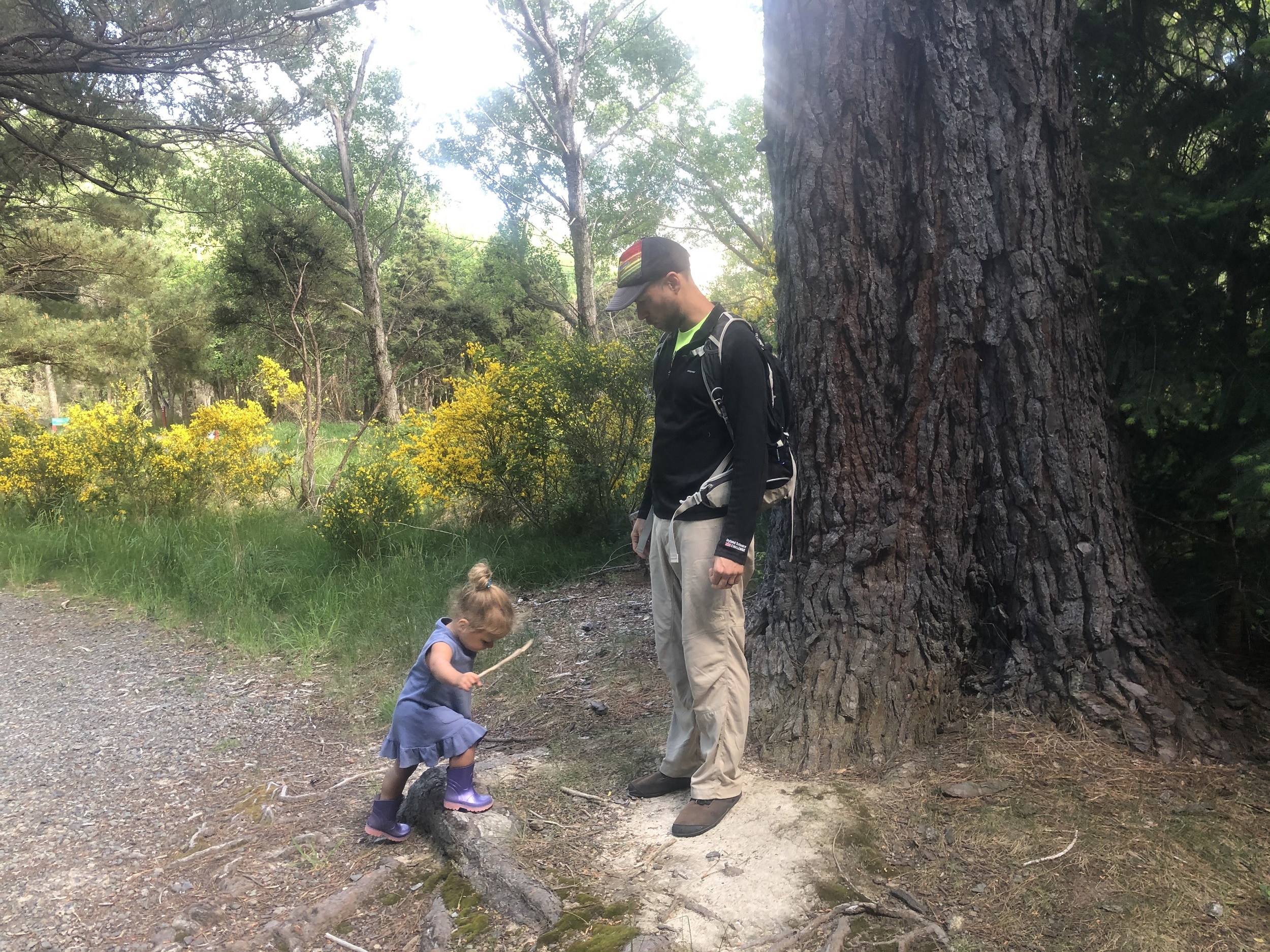
Allow time for exploration on your hikes
3. Plan Around Nap Times
Planning your hikes around a toddler’s nap time can be affected by a variety of factors. Is your toddler still taking two naps? Or are they down to one nap per day? Will your toddler sleep in the carrier? In the car? Or do they need to be home in bed?
We usually planned on our toddler taking a nap in the carrier while on the hike. If, for some reason, she didn’t fall asleep, that meant a late nap on the car ride home. But it was worth the risk for us.
Since we were planning on a nap on trail, though, we had to come prepared. It meant making sure we had her pacifier with us. And in potty training days, it meant changing her into a diaper before that sleep time.
When she was younger, we would wait to leave for our hike until it was morning nap time. We’d pack up the car, and when it was just about time for her nap, climb in and have a peaceful drive there. Then when we arrived, she was refreshed and ready to go.
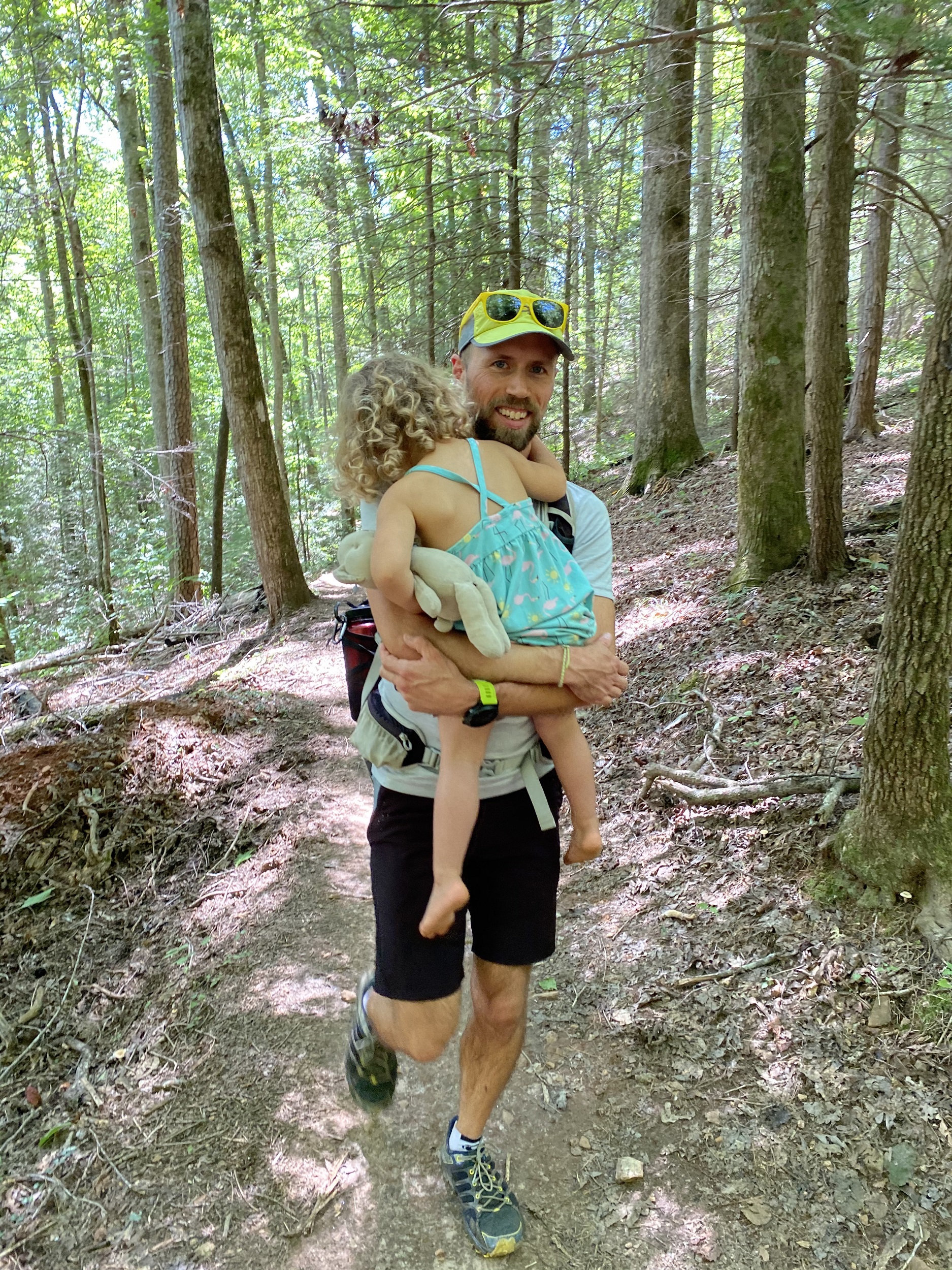
This is what happens when you don't plan around naps AND fail to bring a carrier.
4. Don't Be Afraid of Difficult Hikes With Toddlers
In my experience, hiking toddlers can handle tricky terrain and trails labeled “strenuous” a lot better than most adults I know. In fact, it’s the flat and easy trails that toddlers can get bored with more easily.
Is there a bit of a rock scramble? Fun! It’s time to climb like at the playground!
Is there a steep trail down to a waterfall? Time for a bum slide down the path!
Are there a lot of roots along the trail? Time to practice balancing! Or how about jumping over them?
Obviously, make sure they’re safe. But kids find difficult trails to be a fun challenge. Just the same as that rock wall at the playground.
And since you’re allowing plenty of time, like what we talked about in #2, there is no stress in getting through these obstacles quickly. You won’t feel that elevation gain as much. And you’re more likely to stay alert and watch your own step around all those roots and rocks.
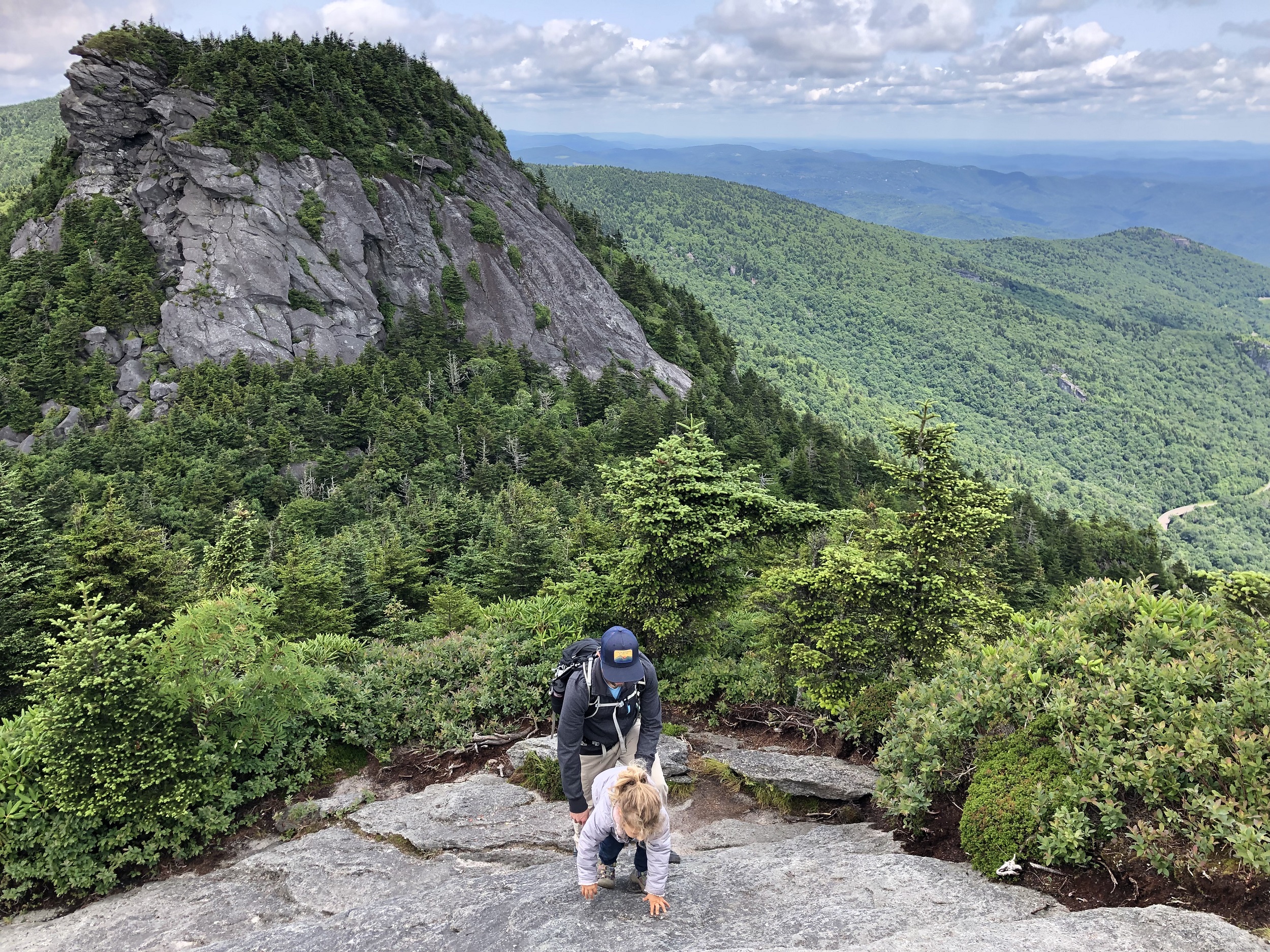
5. Plan to Get Dirty
If you’re constantly trying to avoid dirty clothes and hands, hiking with toddlers is just going to be a stressful experience for you. Allow dirt to just happen. Allow your toddler to plop down and draw with his finger in the dirt. Allow your little one to climb on that slightly-muddy tree stump.
Go into the hike knowing that dirt is going to happen, and plan accordingly.
Have a plan for dirty hands when your toddler is ready to eat. Have a change of clothes ready in the car for the ride home. Wear clothes that you don’t mind getting muddy… for yourself and for your toddler. Bring towels. Plan for muddy feet. You get the picture.
Avoid bringing soft toys that are difficult to clean. Avoid wearing those special new shoes that Grandma just bought him. And avoid freaking out every time your toddler does something other than walk normally on the trail.
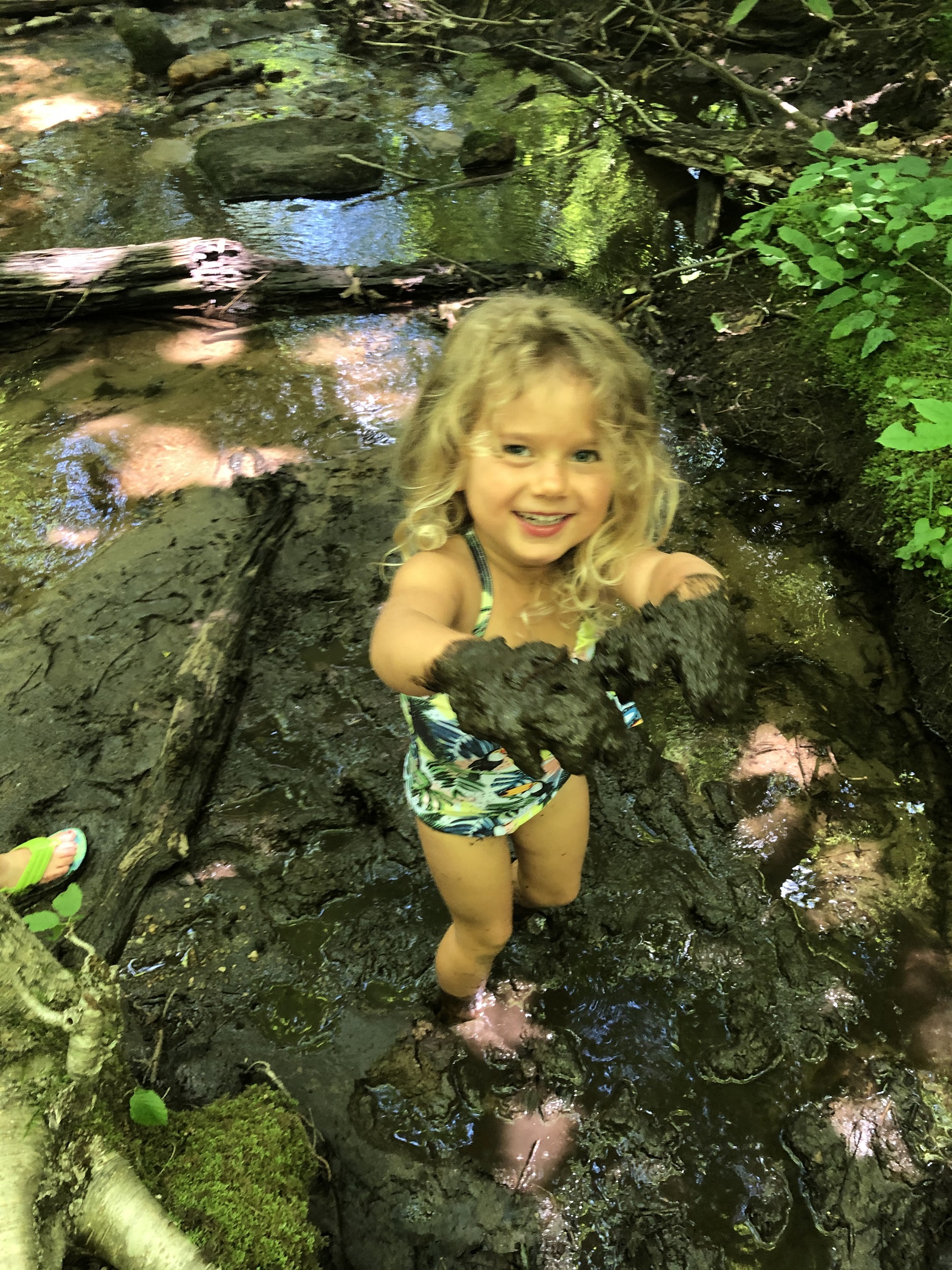
6. What to Bring When Hiking With Toddlers
If you show up prepared for the hike, everyone will be happier. If we’re going on a big hike, we often make lunches and pack the backpack the night before. That way, we are packing up with a calm mind, rather than when we are rushing to get out the door before naptime.
You’ll find what you need as time goes on, but here are a few ideas for what to bring when hiking with toddlers:
- Carrier or Hiking Backpack (see #1)
- Lunches or snacks
- I don’t care how long or short you’re hiking, snacks are a must! We’ve carried a variety of lunches and snacks on trail with us. Sammies, hummus and veggies, fruit, crackers, etc. When Elsie was younger, her favorite trail snack was pancakes! We would make them small and handheld, and she would devour them happily in the hiking backpack.
- If your toddler will be eating in the hiking backpack, you may want to consider the mess factor of the foods you bring. Crackers can be brushed out. But blueberry dribble may be more difficult to get out when you get home.
- Water
- Don’t forget about how long you’re going to be out there! (see #2)
- It may be difficult for your toddler to drink from a nalgene, so have a plan. One of us often carries a bladder with a hose. It’s the perfect water for all of us to share, and it’s a fun new vessel that encourages a hydrated toddler on trail.
- Naptime gear
- (See #3) For us, that meant a pacifier. For your toddler that may mean their special lovie. Either way, come prepared. We all know what happens when a tired toddler doesn't get their nap.
- Weather gear
- Sunscreen
- Sunhats
- Rain gear
- Shoes that can get wet
- Jackets, gloves, and warm hats (don’t forget that it’s often colder up in the mountains!)
- Bugspray (not exactly weather, but you’ll want it in the warmer months)


- Shoes
- I write this as something to bring, rather than sometime to wear, only because we did actually forget shoes one time! We had all piled into the car in time for Elsie’s nap. No shoes are required for napping in the car, so they didn't get put on her feet. Instead, they were left sitting by the back door.
- It was a bit chilly that day, and luckily we had a couple pairs of socks for her. But she had to be in the carrier the whole time!

Don't forget the shoes like we did!
- Diaper gear
- Diapers, wipes, a change mat if you need it. Don’t forget somewhere to put the dirty diaper when you’re on trail! We used cloth nappies, so a wet bag worked perfectly for us.
- Even if your toddler usually uses the toilet, don’t forget diapers if you still need them for naptime. Or for that inevitable #2.
- Extra clothes
- This means both extra layers in case the day changes on you, as well as a whole other set of clothing. Especially if your toddler gets wet on the hike. Even you can admit that wet clothes are just plain uncomfortable.
- A couple of small toys
- For us, this often meant “buddies”. Or, small little figurines that could enjoy nature with her, or hang out in the carrier with her.
- We try to keep it to toys that are easier to clean, but we have made it work with favorite stuffed animals. We just set limits on what these friends can do on the trail. Mostly, that means that they can either hang out in the carrier with her, or go in the backpack with Daddy.
- A quick tip: Watch these friends during naps! You don’t want to have to backtrack 2 miles because your toddler fell asleep and dropped their favorite puppy toy.
- A First Aid Kit
- You don’t need much, especially if you aren’t hiking too far from the car. But there’s a certain comfort in knowing you’d be able to handle certain emergencies if encountered on trail.
- Navigation
- As fun as hiking with toddlers is, you don’t want a wrong turn to double your distance. Know where you’re going, and have a way to keep track of where you are.
- Brent loves using maps.me. He plans the route ahead of time, and the GPS can track our progress on his phone… even when we don’t have service. Whichever method you prefer, have a navigation plan.
7. What To Do When Toddlers Get Bored On a Hike
Do toddlers get bored when hiking? Yes!
As fun as rocks and dirt are, it’s very possible that your toddler will get bored, tired, cranky, etc. along the way. It’s good to have some motivational games ready for this inevitable time.
Here are a few ideas for what to do when your toddler gets bored on a hike:
- Sing songs
- You’ll know their favorites. But songs like Old McDonald and Wheels on the Bus can go on for miles if you get creative enough with the “fill in the blank” parts. “The daddy’s on the trail eat some sammies, eat some sammies, eat some sammies…”
- Hide N’ Seek
- This is a great game for encouraging forward progress. One adult runs ahead and hides behind a tree or rock. Your toddler runs to find them. All of a sudden, you’ve made it another quarter of a mile!
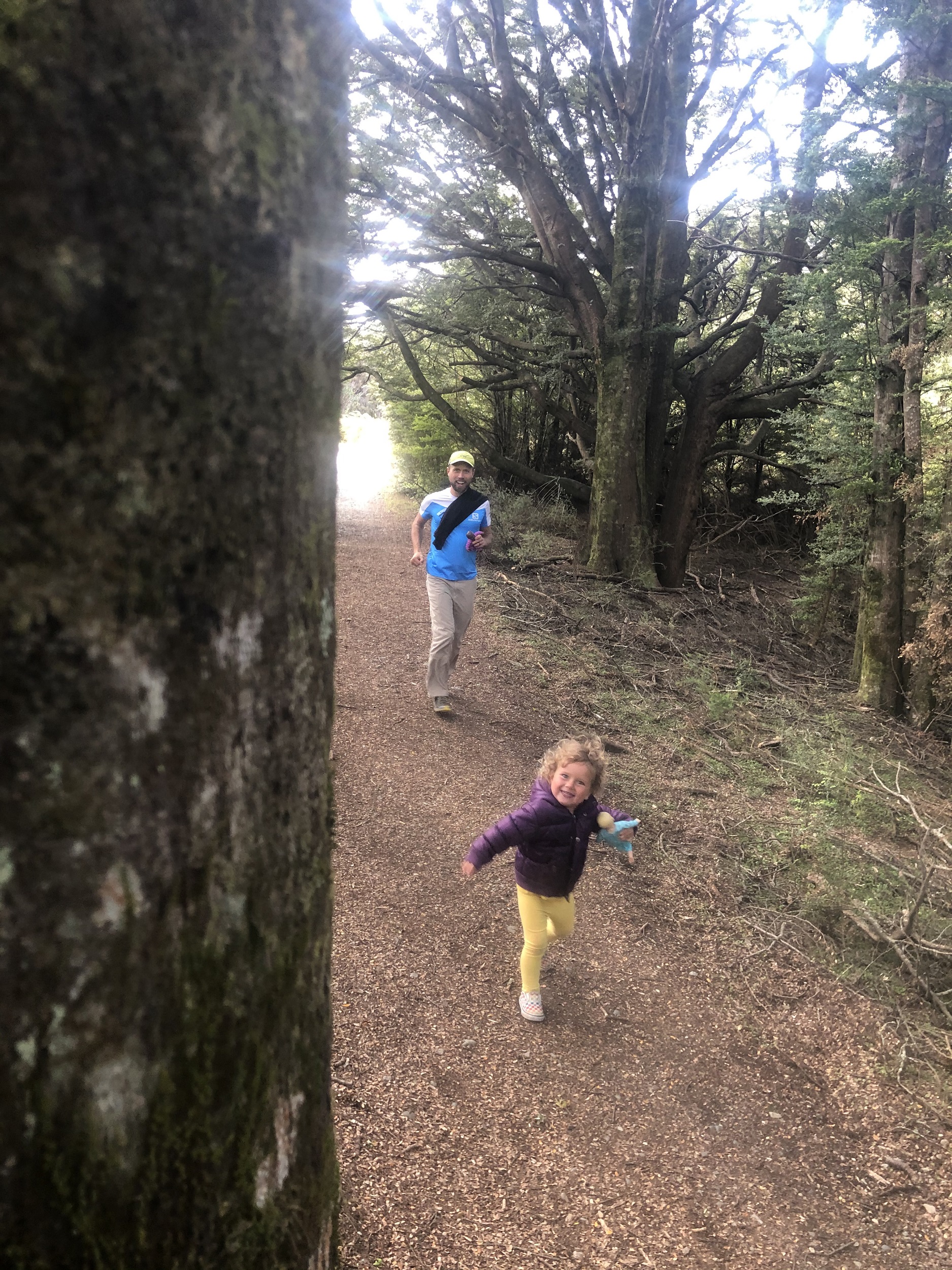
Playing Hide N' Seek
- Go on a “trail marker” hunt
- Point out the trail markers, and see who can spot the next one.
- I Spy
- I Spy is a great one for entertaining your toddler while also encouraging them to appreciate and enjoy their surroundings. With kids this young, it does become a bit repetitive sometimes. “I Spy something green… A leaf!” But it’s fun for them every time.
- Make up your own games
- For a while there, we were finding Pooh Bear stuck up in the trees on every hike. And then all of a sudden, all of his friends were stuck up there, too. We would pretend to catch them as they jumped down and put them in the backpack. Seeking out the next “Pooh Bear” tree became our motivation for forward progress.
- Have races
- Obviously, you’ll want to wait for an easier part of the trail for this one. And Elsie doesn’t seem to have a competitive bone in her body, so it never works for her. But for some friends, this is the best way to make hiking fun for their toddler.
Has our hiking changed with a toddler in tow? Definitely. But is it still one of our favorite activities to do together as a family? Definitely!
Show up to the trails with the right gear and expectations, and you’re bound to have a fun day out as a family.
We often go on hikes when we need to stretch our legs on a road trip. If you’re planning a road trip with your toddler, check out the post 9 Tips for Surviving a Road Trip With a Toddler.

